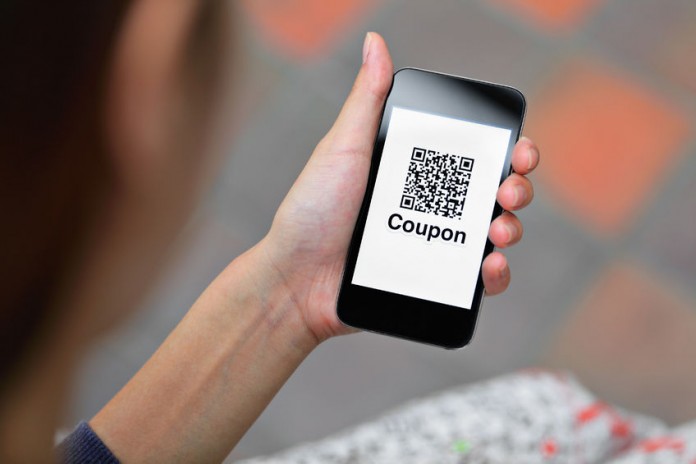The challenge of a business is to attract new customers and keep the existing customers loyal. A good chunk of the operating expenses of a business is devoted to this area. Many businesses use coupons to attract customers to drive up their sales.
Cost Consideration
There are several cost considerations for a business when considering whether or not to use coupons. When a business decides to offer a deal, it is already discounting its products, which means it is implicitly hurting its operating margin. For example, if an Italian Grill offers a buy one get one free, the restaurant has doubled its cost or reduced the revenue by half. If it were to generate $16 for two bowls, it would generate only $8. The cost of food and labor relative to revenue just doubled thereby squeezing the bottom line.
There is not only the loss of “potential” revenue. A business also incurs a cost to market its coupon. To reach out to potential customers who may use a coupon involves the fixed cost of reaching out – or marketing. First, the business needs to engage a design agency to design the flyers for coupons. Second, they need to be printed. Third, the flyers have to be distributed. It quickly adds up to a significant cost – design, print and distribution.
When these two costs are combined – the cost of discounting the products and associated coupon marketing expenses – a business is often either almost netting its profits to zero or operating at a loss. In some instances, businesses that issued deep discount coupons in the hopes of selling additional products struggled for a few months after the coupons expired to cover the losses they incurred during the period when coupons were actively redeemed.
Effectiveness
Once the coupons reach people’s homes, most toss the coupons right in the trash can by their mailbox. One study found that only 27% of customers who receive coupons end up redeeming it. The remaining 73% get wasted. Furthermore, an MIT Sloan study found that social coupons are not ideally suited to ensure customer acquisition and to yield business profits.
There are arguments that coupons, although not effective in bringing in customers, serve as an advertisement. However, the impact of this coupon advertisement or the conversion rate is not guaranteed to be high. While the coupons may encourage customers to visit a business, the operating profit can shrink because of the deep discounts. For example, brands such as Bed Bath and Beyond have hurt their profits because many customers expect a standard 20% discount all the time. This company has quite frequently issued a 20% off coupon. Business Insider reported “Bed Bath and Beyond’s profits declined 10% in the most recent quarter, with expenses related to coupons. Now that consumers have come to expect coupons, the brand feels forced to issue them.”
Megan McArdle wrote in The Atlantic, “Restaurants, who were supposed to be one of the core businesses for daily deals, complained that Groupon customers were disproportionately poor tippers who took up tables while carefully not spending any more than the face value of the Groupon–no drinks, no dessert. Then they never came back.”
Online Coupons
People who use online coupons also tend to use the coupon only for that specific purchase. For example, if you walk into a restaurant with a coupon in hand for a burrito, most likely you will order a drink as well. However, if you are ordering the same product online for delivery, you would perhaps not buy the additional products.
Deal websites such as Groupon and Restaurant.com take a substantial cut from businesses in return for the traffic they send to a business. A restaurant might be left with $20 on a $100 face value coupon. For example, a restaurant, whom issued a coupon through Groupon with a face value of $100, sells the coupon to a customer for $40. When the customer buys the coupon, Groupon takes nearly half of the proceeds or $20. Similarly, food tech companies such as Grubhub or Foodler charge up to 14% of the total order. If you add this to the cost of cost plus the operating expenses, the business is not making too large of a profit.
Coupon Problems
Once coupons are issued, the pricing is fixed. For example, a sandwich shop could offer “buy one get one free” or a percentage discount on the order. Until the coupons expire, the business would have to honor it even if the campaign is not going well. In certain cases, businesses have sought to suspend a campaign once they realized they were burning their margins or they had difficulty fulfilling the orders. Sometimes deep discounts attract massive customers that a business is not prepared to handle and in most cases they are one-time customers.
If the business is distributing coupons locally, it can reach only a small segment of the customers. Mailing coupons to every zip code is expensive, often expensive enough that the business margin would remain negative throughout the campaign.
Coupons at Busy Times
When businesses issue coupons, they don’t know what time they would be busy with customers who came without coupons. Oftentimes, people with coupons in their hand walk into the restaurant around those busy times. Essentially, businesses don’t need customers with coupons when tjey are already busy.
In order to avoid this, some businesses issue coupons with a lot of conditions such as expiration dates or minimum orders. By attaching a lot of strings, coupons don’t become very attractive to consumers. In this case, the potential customer may choose not to visit the business. Consequently, the cost of reaching out to this potential customer is booked as a loss to the business.
Coupons are intended to attract traffic to a business during off-peak hours. If a customer walks in with a coupon, they are expected to order additional products thereby balancing the cost of foregone revenue from the coupon by generating additional revenue from non-coupon item purchases. As more customers order only what the coupon offers, the operating margin is sure to shrink. Hence, the ideal time for a business to offer a deal is when the traffic is lower than expected. For example, a restaurant could offer a deal when the tables look empty. In this case, the fixed operating cost could be reduced as well as additional revenue could be generated. If the restaurant employees are already busy with the customers they have, they perhaps don’t need customers with discount coupons at that busy time.
Find a Home-Based Business to Start-Up >>> Hundreds of Business Listings.
















































